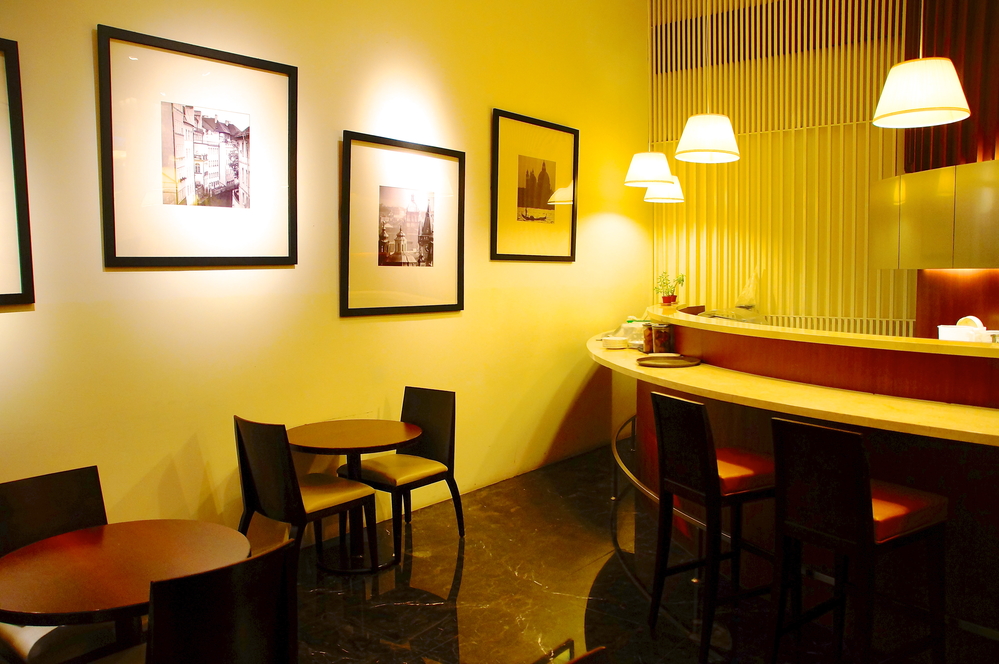Best Asian Restaurant Islamabad: Experience Tastes from Throughout Asia
Best Asian Restaurant Islamabad: Experience Tastes from Throughout Asia
Blog Article
Savor Authentic Oriental Cuisine With a Pan-Asian Twist for a Cooking Experience
Beginning on a cooking journey with genuine Oriental cuisine, improved with a Pan-Asian spin, offers an one-of-a-kind chance to check out the rich tapestry of flavors that specify the region's varied cooking practices. This experience welcomes you to appreciate the beautiful equilibrium of tastes-- sweet, salted, spicy, and sour-- integrated by fragrant natural herbs and spices. Visualize the innovative blend of Thai curry and ramen or the unanticipated delight of sushi burritos. As you ponder these attracting meals, take into consideration the social narratives and historic influences that form them, each bite providing a story waiting to be uncovered.

Checking Out Pan-Asian Flavors
In the realm of worldwide gastronomy, Pan-Asian food stands out for its amazing variety and the unified interaction of flavors from numerous Asian cultures. This cooking method commemorates the rich customs and one-of-a-kind components located across the continent, producing a tapestry of preferences that is both appealing and enjoyable. Key to Pan-Asian cuisine is its capacity to balance contrasting tastes-- pleasant, salted, spicy, and sour-- while highlighting the freshness and top quality of each ingredient.
From the umami-rich soy sauce of Japan to the intense chili peppers of Thailand, Pan-Asian cuisine provides a comprehensive scheme of flavors. These elements are often integrated in inventive means, enhancing dishes with layers of intricacy. For example, making use of aromatic natural herbs such as lemongrass and cilantro, usual in Vietnamese and Thai cuisine, adds a refreshing brightness to dishes, while the incorporation of coconut milk provides a velvety, rich structure.
The emphasis on fresh produce and aromatic spices guarantees that each meal is not only a feast for the palate however also for the senses. Pan-Asian cuisine invites diners to start a cooking journey, checking out the vast and varied landscapes of Asian gastronomy with every bite.
Fusion Dishes to Try
While Pan-Asian food is commemorated for its standard flavors, the modern culinary landscape is significantly accepting blend meals that blend these traditional elements with influences from various other regions. This ingenious approach not only honors the abundant heritage of Asian cookeries but likewise presents novel taste experiences that appeal to modern tastes.
A prime instance of such a combination dish is the Korean-Mexican taco, where seasoned bulgogi beef is covered in a cozy tortilla, covered with kimchi and a zesty gochujang-infused salsa. This mix weds the strong, savory flavors of Korea with the vivid, fresh elements of Mexican food. Likewise, sushi burritos have actually gotten popularity, amalgamating the fragile virtuosity of Japanese sushi with the passionate, hand-held benefit of a burrito, often featuring combination active ingredients like tempura shrimp and avocado with a drizzle of wasabi mayo.
One more notable recipe is Thai curry ramen, which infuses the creamy, aromatic flavors of Thai curry right into the calming brew of traditional Japanese ramen, creating a harmonious blend that tantalizes the senses. These combination recipes expand past plain uniqueness; they represent a culinary dialogue between societies, urging expedition and innovation on the planet of Pan-Asian cuisine.
Vital Components and Flavors
To genuinely value Pan-Asian food, one need to comprehend the necessary active ingredients and seasonings that create its structure. This varied culinary style draws from a rich tapestry of Asian customs, utilizing a harmonious blend of tastes and appearances. Secret components include soy sauce, fish sauce, and oyster sauce, which pass on a full-flavored umami deepness important to Eastern recipes. Complementary to these are rice vinegar and mirin, providing a fragile acidity and sweetness.
Aromatic components are essential, with lemongrass, ginger, and garlic being common across various Pan-Asian dishes. These components give a great smelling base that boosts the intricacy of tastes. Flavors such as celebrity anise, cardamom, and cinnamon introduce heat and character, resembling influences from areas like China and India.

Cooking Techniques and Tips
Mastering the art of Pan-Asian cuisine needs knowledge with its distinctive cooking methods, each contributing to the dynamic tapestry of tastes this cooking tradition is celebrated for. Central to these approaches is the stir-fry, a rapid cooking method company website that preserves the dietary stability and vibrant shades of active ingredients. Utilizing a wok, the stir-fry approach allows for also warm distribution, vital for achieving the characteristic structure and flavor balance of Pan-Asian meals.
An additional basic strategy is steaming, specifically widespread in Chinese food. This mild technique preserves the natural flavors and nutrients of ingredients, making it optimal for seafood and vegetables. Dumplings, a cherished staple, typically take advantage of steaming, resulting in soft, succulent structures.
Barbecuing, likewise integral, presents great smoky depths to recipes such as Oriental bulgogi or Japanese yakitori (Best ambiance restaurants Islamabad). This method typically involves seasoning components, allowing tastes to permeate deeply before food preparation over an open flame or warm plate
Finally, mastering the art of stabilizing tastes-- wonderful, sour, salty, bitter, and umami-- is essential. Correctly layering these aspects can raise a meal from average to remarkable, offering a complex and pleasing culinary experience that personifies the significance of Pan-Asian cuisine.
Dining Experiences Worldwide
Around the world, Pan-Asian food provides an unequaled dining experience, commemorated for its rich tapestry of flavors and vivid presentations. This cooking phenomenon has gone beyond cultural boundaries, catching the hearts and palates of food fanatics worldwide. In worldwide cities like New York, London, and Sydney, Pan-Asian restaurants act as melting pots where culinary practices from Thailand, Japan, China, and beyond assemble, giving diners with an eclectic mix of recipes that highlight the region's diversity.
The worldwide allure of Pan-Asian food depends on its ability to provide both credibility and development. Cooks masterfully marry traditional ingredients such as lemongrass, soy sauce, and miso with contemporary methods, leading to meals that are both refreshingly new and acquainted. This blend permits restaurants to start a cooking trip that values heritage while welcoming modernity.
In addition, eating experiences are boosted with thoughtfully developed atmospheres that reflect the ethos of Pan-Asian appearances. From minimal Japanese-inspired insides to vivid Thai-themed areas, each restaurant provides a distinct ambiance that complements the cooking offerings. As an outcome, customers are not simply consuming a dish however partaking in a cultural experience, making Pan-Asian dining an absolutely international phenomenon.
Conclusion
The expedition of Pan-Asian food provides an extensive understanding of new china the complex interplay of flavors and culinary practices throughout Asia. By embracing blend recipes such as Thai curry ramen and sushi burritos, the cooking journey not only highlights the versatility of typical active ingredients yet additionally showcases cutting-edge modern-day methods. This gastronomic adventure, enriched by necessary flavors and cooking methods, gives a distinct opportunity to appreciate the cultural diversity and culinary virtuosity that define Pan-Asian food on an international range.
Getting started on a cooking trip via authentic Oriental cuisine, improved with a Pan-Asian twist, supplies a special chance to discover the rich tapestry of tastes that define the area's varied culinary customs.In the world of worldwide gastronomy, Pan-Asian cuisine stands out for its amazing variety and the unified interplay of tastes from he said numerous Oriental cultures. Secret to Pan-Asian cuisine is its capacity to stabilize different tastes-- wonderful, salty, spicy, and sour-- while highlighting the quality and high quality of each active ingredient.

Report this page